 EMOIRS
EMOIRS
of the White House years of Lyndon Johnson, possibly the greatest President
of the 20th century. Like his early political hero FDR, Johnson had momentous
events thrust upon him that he utilized to effect great social and legislative
change. But Johnson had no Pearl Harbor outrage or camaraderie of the great
Allied effort; he inherited the country’s first undeclared overseas
war that grew to become, in many ways, its most difficult and unpopular.
Not once in his book does he blame Jack Kennedy for the scrapes and blunders
of the Camelot years that lingered into his administration. Johnson used
the opportunity given him to implement what he viewed as the Kennedy-Johnson
mandate; when all was in place, ahead of schedule, he choose not to reoffer
in 1968. The pragmatic Johnson avoided nuclear brinksmanship and Cold War
competition (other than Vietnam and the Space Race); his legacy was the
Great Society, with social programs and landmark legislation that helped
multitudes of disadvantaged Americans. LBJ is candid about his relationship
with Bobby Kennedy and the
conduct of the
war, including dozens of previously-undisclosed peace overtures to the
North Vietnamese. Opening chapter “The Beginning” describes the
tragedy in Dallas and the flight home. An excerpt (on the formation of the
Warren Commission) from chapter two was included in the 1976 anthology
The
Assassinations. One of those energized realists who occupy the Oval
Office all too rarely; a refreshing and ponderous change from the one-dimensional
power-obsessed LBJ character lurking in most conspiracy books.
Hardcover,
636 pages, 146 B/W photos, 4 maps.
Extensive record of
C2766’s journey from 1940 factory in Terni, Italy to mail-order house
in Chicago to “A. Hidell’s” mailbox in Dallas. Mention of
late-50s Kennedy bill to curtail arms imports and some criticism of NRA.
Bloomgarden was executive assistant to Stewart Udall, Secretary of the Interior
to JFK and LBJ.
Hardcover.
Bantam paperback (shown) 1976.

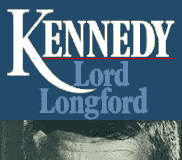





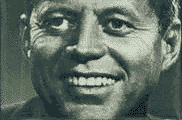





Lord Longford
 Kennedy
Kennedy

London: Weidenfeld & Nicolson, 1976.
 NASSUMING
NASSUMING
biography from former Leader of the House of Lords grants Tory perspective
to Kennedy’s political decisions that explains his natural rapport
with British conservatives. Ties to England were significant and enduring:
liquor contracts with British distilleries enhanced family fortune during
the Depression; Ambassadorship provided important political lessons. During
war, Jack’s
Why England Slept was released, and Kathleen’s
British husband and the family’s eldest brother killed in European
action. Kennedy could balance Irishness with pro-British sentiment; as President,
his forceful ideology stirred hope in England and the rest of the world.
But Inaugural language signified willingness to test American resolve in
places like Vietnam. Longford tolerant of Blairs’ controversial
The
Search for JFK and is sympathetic to Kennedy’s womanizing. Chapter
on assassination cites books by
Manchester
and
Roberts, and the then-recent
Post Mortem (Weisberg)
and
November 22 (Eddowes).
Figures Oswald lone assassin influenced by hatred fanned by Dallas city
atmosphere, but takes issue with Manchester’s one-sided portrayal of
Johnson’s takeover. Similarly, Longford can’t resist painting
Khrushchev as evil mastermind thwarting good-intended Camelot. I suspect
had Kennedy been born English, he would have been a Tory. Hardcover. Star
paperback (shown) 1978.



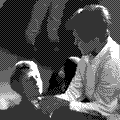



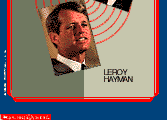




Hayman, Leroy
 The Assassinations of John and Robert
Kennedy
The Assassinations of John and Robert
Kennedy

New York: Scholastic, 1976.
 alanced
look
alanced
look at both Kennedy assassinations, with nearly a third devoted
to the family history and Camelot years. Assassination material presented
straight-forward, without lapsing into oversentimentality; includes many
side-events that offer insight and reflect thoughtfulness for the victims
and their survivors. Some minor misperceptions, such a Jackie’s hat
being “blue” and underpass witnesses reporting shots from “behind”
them. Claims Jackie choose Arlington for couple’s final resting place
a year before Dallas. Correctly faults JFK aides for removing body but slants
Tippit evidence towards conspiratorists. Focus is on Oswald, his interest
in Communism, and what appears to Hayman as mysterious sources of funding
for Lee’s pursuits. Ruby that weekend exhibited “a pattern of
emotional upset that may had led to the crime.” Greatly downplays Sirhan’s
rationale that the Palestinians were victimized by Israel. 1976 text ended
with counter-argument to Kennedy family’s plea the preceding year to
let the matter rest. Postscript in reprint mentions HSCA findings, recites
new conspiracy revelations, and—for the first time—addressed the
Garrison case. Softcover, 142 pages, 10 B/W photos. 1992
softcover
reprint (shown).

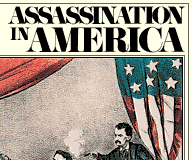

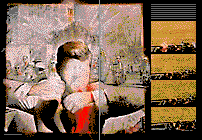



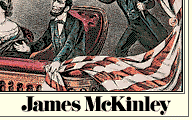





McKinley, James
 Assassination in America
Assassination in America

New York: Harper & Row, Feb. 1977.
 rofessor
rofessor
of English probes every significant American assassination or attempt since
Jackson in 1835. Tends to dismiss conspiracy theories, including a larger
plot beyond Booth’s gang. Very readable while full of historical context.
JFK assassination rates three of book’s eight chapters. “Death
in Dallas” recounts reasons for the visit, basic facts of the killing,
background of Oswald and the work of the Warren Commission. “Attack
on the Report” concedes nothing in the case against Oswald can be “taken
at face value,” details timing issues in the Zapruder film and argues
the jacket wasn’t bunched. “Danger for the People” runs down
the list of popular conspiracy theories. Respectful of the substantial claims;
critical of
O’Toole’s PSE pseudo-science
and grandiose plots such as that advanced by Prouty. Published with slight
changes year before in
Playboy (“End of Camelot” spread
shown) as seven-part “Playboy’s History of Assassination in America.”
Hardcover,
243 pages.
 Articles
Articles

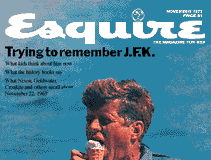










Trying to Remember J.F.K
 Esquire
Esquire / November 1973
Some ten pages of retrospection.
Includes “The Greatest Home Movie Ever Made” by
Life’s
Richard B. Stolley and “Legacy
of Suspicion” by
Bernard Fensterwald,
Jr. “Where Were You?” has Nixon,
Ford,
Goldwater, Bob Hope, Billy Graham and Barbara Walters. Shows two frames
from Zapruder’s pre-motorcade footage (grandson on patio and Sitzman
waving).

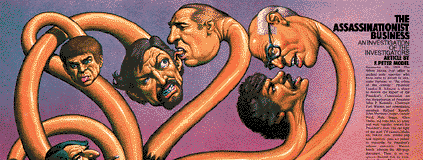








Model, F. Peter

The Assassinationist Business
 Oui
Oui / February 1976
 odel
odel
looks into the “eclectic collection” of conspiracy researchers,
finding “a common trait: distrust and suspicion of one another.”
An accompanying article, “When Good Assassinologists Get Together …
They Seldom Get Together” by Tom Shales, recites instances of actual
name-calling that would make Don Rickles blush. Also includes an interview
with LA coroner Dr. Thomas Noguchi, who recalls doing the RFK autopsy with
great care to prevent the “many seemingly unanswered questions”
from 1963. Model and Groden co-authored 1976
JFK
Case for Conspiracy.
(lead-off spread shown) 
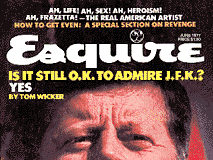



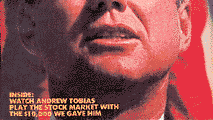




Wicker, Tom

Kennedy Without End, Amen
 Esquire
Esquire / June 1977
 ive-page
ive-page
article resists prediction that Kennedy might ultimately be remembered for
one thing: the first Roman Catholic elected President. Tries to correct
negative revisionism stemming from the CIA-Mafia assassination plots, wiretaps,
Judith Campbell Exner’s story, the earthy language in
Conversations
with Kennedy, and the shadow of Chappaquiddick. Was a President who
entertained visions, and could learn and grow; thus Wicker suggests Kennedy
would have scaled back the commitment to Vietnam. An addendum to Wicker’s
1964
Esquire article “Kennedy Without Tears.”

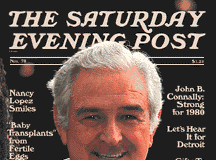



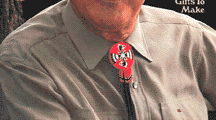




Rosenfeld, Paul

The Rising Star of John Connally
 Saturday Evening Post
Saturday Evening Post / November 1978
 HE
POST,
HE
POST, which ran a
series
of articles on the assassination controversy in 1975, commemorated the
15th anniversary of Dallas indirectly. Cover story article promoting then-Republican
golden-boy John Bowden Connally ran to 11 pages. Several full-color picture
spreads of the Connally ranch, along with straight-talk from the former
Texas Governor, who was severely wounded in Dallas. Near the end, author
writes of the “silver bullet” (?) and
Nellie
saving Connally’s life by closing his wound. Connally admits to “suspicion”
that Oswald may have been influenced by others. Perhaps smarting from Watergate,
Post editorial firmly endorses Connally as the man needed to roust
“incompetent liberals” and Jimmy Carter’s “homegrown
socialism that Moscow itself might wholeheartedly approve.” A two-page
article on Henry Ford’s Greenfield Village mentioned FDR’s Sunshine
Special limo; JFK’s Continental death car, in storage there, was not
displayed until John Jr.’s 21st birthday.







































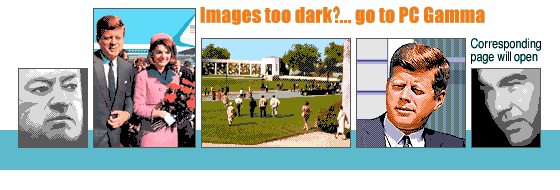 Digital design and contents:
Digital design and contents:
© Copyright 2004 Jerry Organ.
All rights reserved.
Book and magazine artwork have individual copyright.





Search this site!
